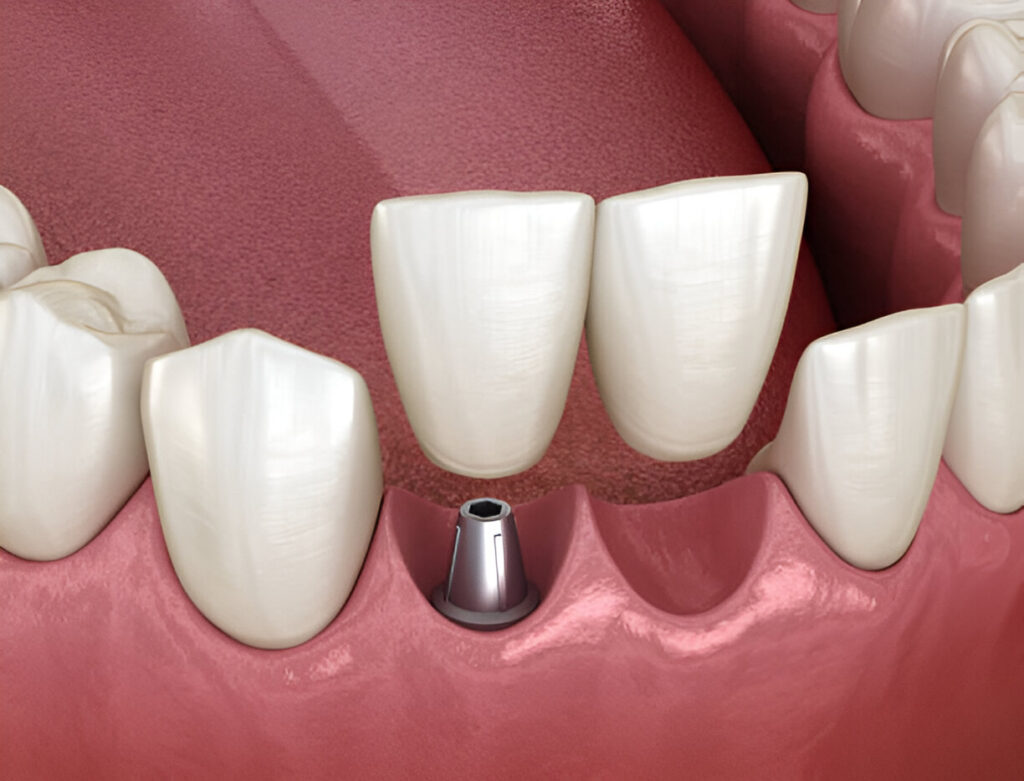If you’re missing teeth, dental implants can help bring back your smile. They are strong, long-lasting, and feel like real teeth. But did you know there are different types of dental implants? Choosing the right one depends on your needs and bone health. In this guide, we will explain the three main types of implants. We’ll also help you understand how each one works and when it might be used. Let’s get started.
What Are Dental Implants?
Trusted dental implants in Aberdeen are small metal posts placed in the jawbone to replace missing tooth roots. Once healed, a crown or denture is attached on top. The implant holds it in place, just like a natural tooth. Most implants are made of titanium, a safe and strong metal. When the implant is fitted into the jaw, it fuses with the bone. This process makes it strong and steady. With good care, implants can last many years. They help you eat, talk, and smile with confidence.
How Many Days After Dental Implants Can I Eat Normally?
Endosteal Implants
Endosteal implants are the most common type. They are shaped like screws and placed into the jawbone. These implants are best if your jaw is healthy and strong. Once the implant is placed, it needs time to heal. During this time, it joins with the bone. After healing, a false tooth is placed on top. These implants are secure and last a long time. Many people choose this type because it feels natural and looks like a real tooth. It is used for single teeth, bridges, or even full sets.
Subperiosteal Implants
Subperiosteal implants are placed on top of the jawbone but under the gum. They are not fixed into the bone like endosteal implants. Instead, a metal frame sits under the gum with small posts sticking out. Once the gum heals, false teeth are attached to these posts. This type is used when the jawbone is not strong or thick enough. It’s a good option for people who can’t have bone grafts. Though less common, it is still useful in many cases. The healing time may be shorter than other types.
How Long Does an Implant Surgery Take for One Tooth?
Zygomatic Implants
Zygomatic implants are the least common. They are used when there is not enough bone in the upper jaw. These implants are placed in the cheekbone, not the jawbone. This is a more complex procedure and needs a skilled dental team. It’s only used when other implant types won’t work. Zygomatic implants can still give good results, even when the jawbone is very weak. Though they are rare, they are an important option for patients with severe bone loss. They also help avoid long bone-building surgeries.
When Are These Implants Used?
Each implant type is used in different cases. Endosteal implants are chosen when there is enough healthy bone. Subperiosteal implants are helpful when the bone is thin but surgery isn’t an option. Zygomatic implants are used only when the upper jawbone is very weak. Your dentist will check your mouth and take X-rays. Then they’ll choose the best option for you. In some cases, extra steps like bone grafts or sinus lifts may be needed. These help prepare the mouth before placing the implants.
Extra Steps Before Getting Implants
Sometimes, your jaw may not be ready for implants. If so, there are a few things your dentist may suggest:
- Bone grafting: Adding extra bone to the jaw if it’s too soft or thin.
- Sinus lift: Lifting the sinus to make room for bone in the upper jaw.
- Ridge expansion: Widening the jaw if it’s too narrow for an implant.
These treatments help create a solid base. Once the area heals, the implant can be placed safely.
Are Dental Implants as Good as Real Teeth?
Choosing the Right Implant
Choosing the best implant depends on many things. These include how many teeth are missing, your bone health, and your comfort with surgery. Your dentist will help guide you. Talk to them about your goals and concerns. Some people want fixed teeth. Others prefer removable options. You may also have a budget to consider. No matter the choice, implants can improve your life. They make eating, talking, and smiling easier and more comfortable.
What Foods to Avoid After Dental Implants?
Conclusion
Dental implants are a safe and trusted way to replace missing teeth. The three types—endosteal, subperiosteal, and zygomatic—offer choices for all needs. Whether you need one tooth or a full set, there’s a solution. The right implant can restore your smile and your confidence. Speak with your dental team to learn which option is right for you. With care and support, you’ll be smiling again in no time.
Call to Action – Holburn Dental and Implant Centre
If you’re considering dental implants and want expert guidance on the best option for your smile, we’re here to help. At Holburn Dental and Implant Centre, our experienced team will assess your needs and walk you through every step of the process with care and clarity.
Whether you need a single tooth replacement or a more advanced solution, we’ll recommend the implant type that suits your health, goals, and budget.
Book your consultation today and take the first step towards a lasting, confident smile with Holburn Dental and Implant Centre – where your comfort and oral health come first.
Frequently Asked Question
Which type of dental implant is the most common?
Endosteal implants are the most common type. They are placed directly into the jawbone and offer a secure foundation for crowns, bridges, or dentures. Most patients are suitable for this type if they have healthy bone and gums.
Can I get implants if my jawbone is weak?
Yes. If your jawbone is weak or thin, subperiosteal or zygomatic implants may be used. In some cases, bone grafting or sinus lifts are done first to build up enough bone for treatment.
Are zygomatic implants safe?
Zygomatic implants are safe when placed by experienced professionals. They are only used when there isn’t enough bone in the upper jaw. This type of implant is placed in the cheekbone and avoids the need for bone grafts.
How long do dental implants last?
With proper care, dental implants can last 15 years or more. Good oral hygiene, regular dental check-ups, and avoiding smoking can help extend their life. They are designed to be a long-term solution for missing teeth.
Is the implant procedure painful?
The implant procedure is done under local anaesthetic, so you won’t feel pain during treatment. Mild discomfort after surgery is normal and can be managed with medication. Most people return to normal activities within a few days


